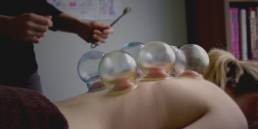The holy grail of child birthing is the natural, intervention free birth – whatever that looks like for you – water birth, active birth, hospital or home birth…… there’s one thing that most of us agree on: the less need for medical intervention the better. So how do we give ourselves the best chance at birthing our little prince or princess naturally, without intervention? Birth plans and hope have their place of course, but what one really needs is practical tools and skills that you and your PRE-EDUCATED birth partner can draw on when the baby drops and show time begins.
Let’s start with the prep work. Shaping up for labour is an obvious no brainer, whether you’ve managed to find time between work and family demands/convince yourself that your deep-seated dislike of exercise can be overcome – or not – we all must agree that birthing is a demanding creature, and like a four-day hike through the Andean mountains at ridiculously high altitude, one really should at least try to train perhaps a little before the big event (true story, much pain).
Prenatal Yoga and other alternatives
Prenatal yoga is a wonderful way to move and stretch the body, and research suggests it can improve sleep, reduce stress and anxiety, increase the strength, flexibility and endurance of the muscles needed for childbirth, and decrease the aches and pains we often experience during pregnancy [1]. The wonderful thing about prenatal classes is that they are specifically designed to help prepare your mind and body for labour. Breathwork, visualisations, pelvic opening and more…and just having a regular practice that makes you feel good can be something you can draw on as you move through the stages of giving birth.
Walking or swimming at whatever pace and distance you’re comfortable with is also invaluable, especially in those last weeks when the body and mind should be kept as quiet and calm as possible. Walking is the most natural exercise a human body can do, and the gentle movement of the hips encourages baby to move lower into the pelvic cavity when they are ready.
Spinning Babies – an invaluable collection of birth knowledge and tools (not just for babies in breech presentation either) – have ‘10 Daily Essentials’, which is a carefully curated compilation of exercises and general practices designed to assist with pelvic balance, suppleness and best position of little one for more efficient birthing. Find this list, along with other fantastic information and videos on their website: spinningbabies.com
Massage
A weekly 20 minute massage has been shown to be significantly useful for pregnancy and labour (so I’m sure an hour must be five times as good!?). Research shows it lowers depression and anxiety pre AND post-natally, as well as eases back and leg pain [2].
Acupuncture
Acupuncture is a fantastic way of preparing the body for labour. Acupuncture can help with pain and stress, and is a really great way to take some ‘me time’ that can have a big benefit when it comes to labouring as efficiently as possible. If you can find a therapist that combines acupuncture with massage, you’ve got it made in the shade!
The birth day
But let’s get down to the main event. What tools can we get on board to give ourselves the best chance possible for an intervention free birth? Midwives have been collecting birthing tools and knowledge for eons, and while that level of knowledge would be amazing, a simple understanding of the birthing process and a handful of tools to use if and when needed are all we need to give ourselves a great shot at a smooth delivery. After all, a woman’s body is MADE for birthing, and the more we can trust and connect with that knowing, the more we can leave fear at the door and allow things to flow as they should.
Breathwork, sound and visualisations are super valuable in the birthing process and exploring a variety of techniques is great to allow you a small collection of ‘favourites’ to draw on in each stage. Different stages of labour will place different demands on the body – early labour may only require some long smooth breaths, whereas later in the piece, some low guttural oooooooo’s may really fit the intensity of the process. Always remember that central to all is the long smooth exhale, and the loose jaw (as it correlates with the pelvic floor).
Massage, acupressure, and other manual techniques can be invaluable pre, during and post labour, to help ease pain, calm the mind and encourage everything to flow. Having a few options on board to contribute in each stage of the birthing process can really make a birth partner feel like they are a valuable part of the team, and give mum some significant help. One study showed that birth partners instructed on how to massage labouring mum’s back and legs for 15 minutes at the start of every hour of labour, resulted in the women experiencing significantly less pain, and their labours were on average 3 hours shorter with less need for medication [3]. It is also wonderful to have some ideas on board for if labour isn’t progressing as it should. This is often due to baby’s position in the pelvis, or mum’s state of mind, so with the right tools and knowledge the birth partner can really make a huge difference.
When it comes down to it, the key is to have mums AND birth partner/s educated and empowered with knowledge and tools so that if/when mammas lose themselves in the ‘moment’, someone is there to offer strategies and techniques to help them manage the intense physical and emotional nature of this most sacred process, and avoid the ‘what ifs’ that can come when birthing goes awry. Too often mum does all the preparing…. meditating, yoga’ing, whatever she’s drawn to…. while the birth partner turns up on the day to offer moral support. While moral support is a huge part of things, what is even better is really understanding the process and having educated and thoughtful techniques to draw on, if and when the need arises.
We can never predict how we will go in labour – what will be helpful and what will get thrown out the window. Sometimes medical intervention is necessary and thank goodness the option is there. However, studies and common sense tell us that the more knowledge and skills we have on board to manage the physical and emotional gauntlet, the more chance we’ll find those things that will help us get to the other side as comfortably and naturally as possible.
Join Tanya for her ‘Tools for Natural Birthing’ workshop, co-presented with prenatal yoga and Hypnobirthing instructor Esther McVicar of Free 2 Be Yoga in beautiful Cabarita Beach. This workshop covers all the aforementioned birthing knowledge and tools, and is designed to educate and empower birthing mums and their birth partners.
- Curtis K, Weinrib A and Katz J, 2012. ‘Systematic Review of Yoga for Pregnant Women: Current Status and Future Direction’, Evidence Based Complementary and Alternative Medicine, Article ID 715942.
- Field T, Hernandez-Reif M, Hart S, et al. 1999. ‘Pregnant women benefit from massage therapy’, Journal of Psychosomatic Obstetric Gynaecology, Volume 20, pp31–38. [PubMed] •• Showed decreased anxiety and stress hormones (norepinephrine) during pregnancy, and fewer obstetric and postnatal complications, including lower prematurity rates following pregnancy massage.
- Field T, Hernandez-Reif M, Taylor S, Quintino O, Burman I. 1997. ‘Labor pain is reduced by massage therapy’, Journal of Psychosomatic Obstetric Gynaecology, Volume 18, pp286–291. [PubMed] •• Massage therapy during the first 15 min of every hour of labour decreased anxiety and pain and the need for pain medication. In addition, the massaged mothers had shorter labour, a shorter hospital stay and less depressed mood.
Tools for Natural Birthing workshop
A hands on workshop to help mums-to-be and their birth partners connect and navigate the birthing process together. Tanya and Esther McVicar from Free2beYoga join forces in a workshop that incorporates yoga, movement & breathwork, acupressure, essential oils, and so much more.
Topics covered include:
- Preparing the body and mind for labour
- Encouraging cervical ripening and labour to begin
- Yoga practices for pre and during labour
- Movement for pre and during labour
- Breathwork & meditation for labour
- Positions for labour, including ideas for when baby is not positioned optimally
- Acupressure for labour, pain management, and malposition
- Massage techniques for pre and during labour
- Essential oils for pre, during and post labour




